Florian Willomitzer
3D Imaging of Complex Specular Surfaces by Fusing Polarimetric and Deflectometric Information
Jun 04, 2024Abstract:Accurate and fast 3D imaging of specular surfaces still poses major challenges for state-of-the-art optical measurement principles. Frequently used methods, such as phase-measuring deflectometry (PMD) or shape-from-polarization (SfP), rely on strong assumptions about the measured objects, limiting their generalizability in broader application areas like medical imaging, industrial inspection, virtual reality, or cultural heritage analysis. In this paper, we introduce a measurement principle that utilizes a novel technique to effectively encode and decode the information contained in a light field reflected off a specular surface. We combine polarization cues from SfP with geometric information obtained from PMD to resolve all arising ambiguities in the 3D measurement. Moreover, our approach removes the unrealistic orthographic imaging assumption for SfP, which significantly improves the respective results. We showcase our new technique by demonstrating single-shot and multi-shot measurements on complex-shaped specular surfaces, displaying an evaluated accuracy of surface normals below $0.6^\circ$.
Event-based Motion-Robust Accurate Shape Estimation for Mixed Reflectance Scenes
Nov 16, 2023Abstract:Event-based structured light systems have recently been introduced as an exciting alternative to conventional frame-based triangulation systems for the 3D measurements of diffuse surfaces. Important benefits include the fast capture speed and the high dynamic range provided by the event camera - albeit at the cost of lower data quality. So far, both low-accuracy event-based as well as high-accuracy frame-based 3D imaging systems are tailored to a specific surface type, such as diffuse or specular, and can not be used for a broader class of object surfaces ("mixed reflectance scenes"). In this paper, we present a novel event-based structured light system that enables fast 3D imaging of mixed reflectance scenes with high accuracy. On the captured events, we use epipolar constraints that intrinsically enable decomposing the measured reflections into diffuse, two-bounce specular, and other multi-bounce reflections. The diffuse objects in the scene are reconstructed using triangulation. Eventually, the reconstructed diffuse scene parts are used as a "display" to evaluate the specular scene parts via deflectometry. This novel procedure allows us to use the entire scene as a virtual screen, using only a scanning laser and an event camera. The resulting system achieves fast and motion-robust (14Hz) reconstructions of mixed reflectance scenes with < 500 $\mu$m accuracy. Moreover, we introduce a "superfast" capture mode (250Hz) for the 3D measurement of diffuse scenes.
Accurate Eye Tracking from Dense 3D Surface Reconstructions using Single-Shot Deflectometry
Aug 15, 2023

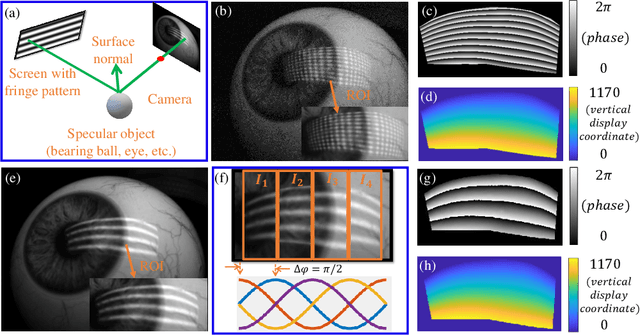
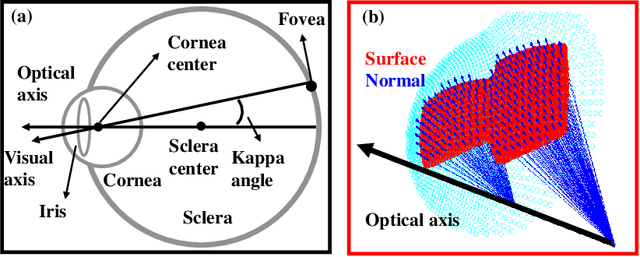
Abstract:Eye-tracking plays a crucial role in the development of virtual reality devices, neuroscience research, and psychology. Despite its significance in numerous applications, achieving an accurate, robust, and fast eye-tracking solution remains a considerable challenge for current state-of-the-art methods. While existing reflection-based techniques (e.g., "glint tracking") are considered the most accurate, their performance is limited by their reliance on sparse 3D surface data acquired solely from the cornea surface. In this paper, we rethink the way how specular reflections can be used for eye tracking: We propose a novel method for accurate and fast evaluation of the gaze direction that exploits teachings from single-shot phase-measuring-deflectometry (PMD). In contrast to state-of-the-art reflection-based methods, our method acquires dense 3D surface information of both cornea and sclera within only one single camera frame (single-shot). Improvements in acquired reflection surface points("glints") of factors $>3300 \times$ are easily achievable. We show the feasibility of our approach with experimentally evaluated gaze errors of only $\leq 0.25^\circ$ demonstrating a significant improvement over the current state-of-the-art.
Thermal Spread Functions (TSF): Physics-guided Material Classification
Apr 03, 2023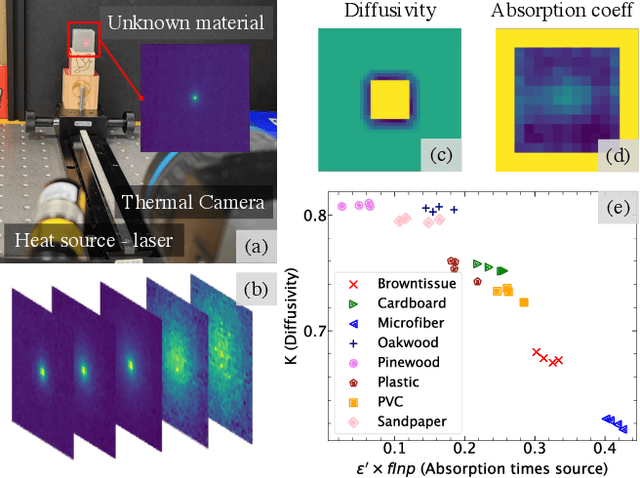
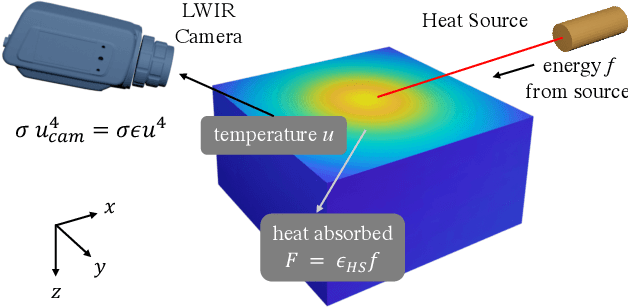
Abstract:Robust and non-destructive material classification is a challenging but crucial first-step in numerous vision applications. We propose a physics-guided material classification framework that relies on thermal properties of the object. Our key observation is that the rate of heating and cooling of an object depends on the unique intrinsic properties of the material, namely the emissivity and diffusivity. We leverage this observation by gently heating the objects in the scene with a low-power laser for a fixed duration and then turning it off, while a thermal camera captures measurements during the heating and cooling process. We then take this spatial and temporal "thermal spread function" (TSF) to solve an inverse heat equation using the finite-differences approach, resulting in a spatially varying estimate of diffusivity and emissivity. These tuples are then used to train a classifier that produces a fine-grained material label at each spatial pixel. Our approach is extremely simple requiring only a small light source (low power laser) and a thermal camera, and produces robust classification results with 86% accuracy over 16 classes.
Optimization-Based Eye Tracking using Deflectometric Information
Mar 09, 2023Abstract:Eye tracking is an important tool with a wide range of applications in Virtual, Augmented, and Mixed Reality (VR/AR/MR) technologies. State-of-the-art eye tracking methods are either reflection-based and track reflections of sparse point light sources, or image-based and exploit 2D features of the acquired eye image. In this work, we attempt to significantly improve reflection-based methods by utilizing pixel-dense deflectometric surface measurements in combination with optimization-based inverse rendering algorithms. Utilizing the known geometry of our deflectometric setup, we develop a differentiable rendering pipeline based on PyTorch3D that simulates a virtual eye under screen illumination. Eventually, we exploit the image-screen-correspondence information from the captured measurements to find the eye's rotation, translation, and shape parameters with our renderer via gradient descent. In general, our method does not require a specific pattern and can work with ordinary video frames of the main VR/AR/MR screen itself. We demonstrate real-world experiments with evaluated mean relative gaze errors below 0.45 degrees at a precision better than 0.11 degrees. Moreover, we show an improvement of 6X over a representative reflection-based state-of-the-art method in simulation.
Single-shot ToF sensing with sub-mm precision using conventional CMOS sensors
Dec 02, 2022Abstract:We present a novel single-shot interferometric ToF camera targeted for precise 3D measurements of dynamic objects. The camera concept is based on Synthetic Wavelength Interferometry, a technique that allows retrieval of depth maps of objects with optically rough surfaces at submillimeter depth precision. In contrast to conventional ToF cameras, our device uses only off-the-shelf CCD/CMOS detectors and works at their native chip resolution (as of today, theoretically up to 20 Mp and beyond). Moreover, we can obtain a full 3D model of the object in single-shot, meaning that no temporal sequence of exposures or temporal illumination modulation (such as amplitude or frequency modulation) is necessary, which makes our camera robust against object motion. In this paper, we introduce the novel camera concept and show first measurements that demonstrate the capabilities of our system. We present 3D measurements of small (cm-sized) objects with > 2 Mp point cloud resolution (the resolution of our used detector) and up to sub-mm depth precision. We also report a "single-shot 3D video" acquisition and a first single-shot "Non-Line-of-Sight" measurement. Our technique has great potential for high-precision applications with dynamic object movement, e.g., in AR/VR, industrial inspection, medical imaging, and imaging through scattering media like fog or human tissue.
Synthetic Wavelength Imaging -- Utilizing Spectral Correlations for High-Precision Time-of-Flight Sensing
Sep 11, 2022



Abstract:This book chapter describes how spectral correlations in scattered light fields can be utilized for high-precision time-of-flight sensing. The chapter should serve as a gentle introduction and is intended for computational imaging scientists and students new to the fascinating topic of synthetic wavelength imaging. Technical details (such as detector or light source specifications) will be largely omitted. Instead, the similarities between different methods will be emphasized to "draw the bigger picture."
Can Deep Learning Assist Automatic Identification of Layered Pigments From XRF Data?
Jul 26, 2022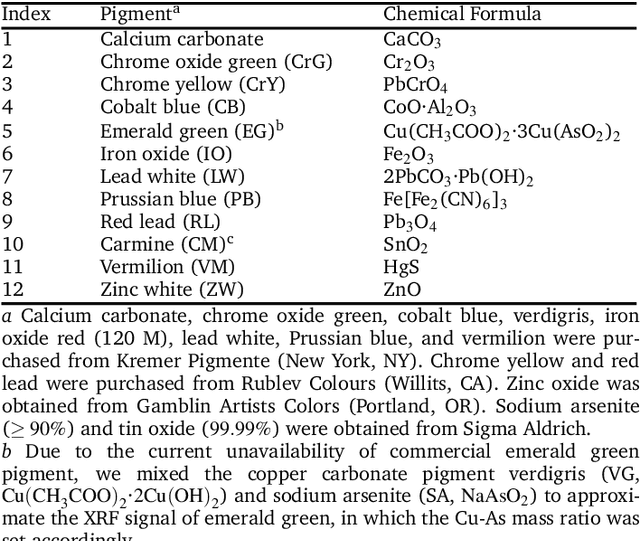
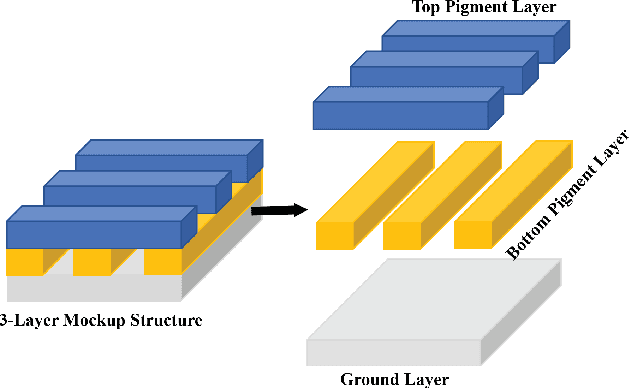
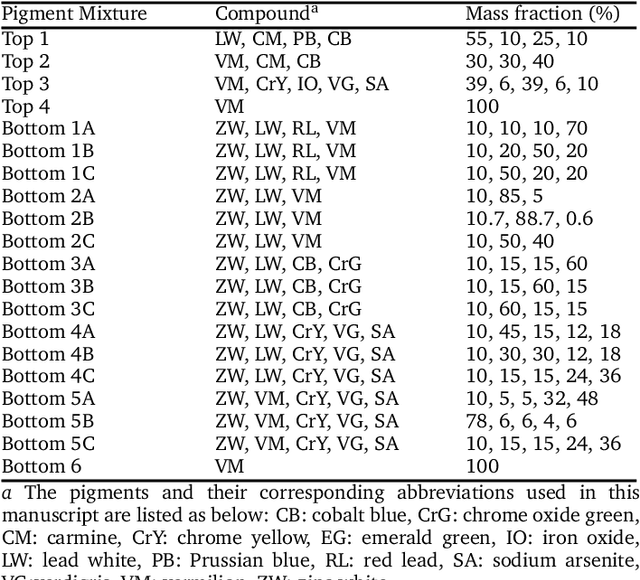

Abstract:X-ray fluorescence spectroscopy (XRF) plays an important role for elemental analysis in a wide range of scientific fields, especially in cultural heritage. XRF imaging, which uses a raster scan to acquire spectra across artworks, provides the opportunity for spatial analysis of pigment distributions based on their elemental composition. However, conventional XRF-based pigment identification relies on time-consuming elemental mapping by expert interpretations of measured spectra. To reduce the reliance on manual work, recent studies have applied machine learning techniques to cluster similar XRF spectra in data analysis and to identify the most likely pigments. Nevertheless, it is still challenging for automatic pigment identification strategies to directly tackle the complex structure of real paintings, e.g. pigment mixtures and layered pigments. In addition, pixel-wise pigment identification based on XRF imaging remains an obstacle due to the high noise level compared with averaged spectra. Therefore, we developed a deep-learning-based end-to-end pigment identification framework to fully automate the pigment identification process. In particular, it offers high sensitivity to the underlying pigments and to the pigments with a low concentration, therefore enabling satisfying results in mapping the pigments based on single-pixel XRF spectrum. As case studies, we applied our framework to lab-prepared mock-up paintings and two 19th-century paintings: Paul Gauguin's Po\`emes Barbares (1896) that contains layered pigments with an underlying painting, and Paul Cezanne's The Bathers (1899-1904). The pigment identification results demonstrated that our model achieved comparable results to the analysis by elemental mapping, suggesting the generalizability and stability of our model.
SkinScan: Low-Cost 3D-Scanning for Dermatologic Diagnosis and Documentation
Jan 31, 2021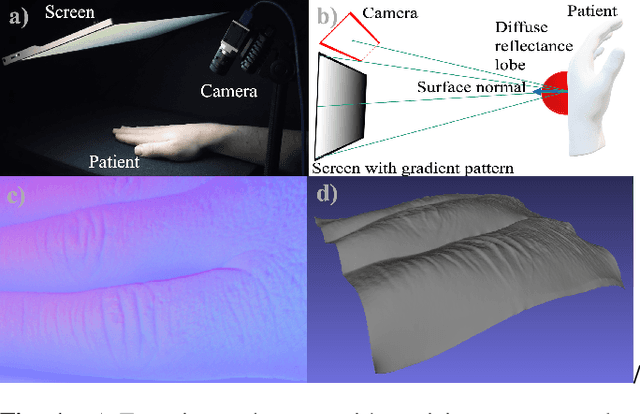
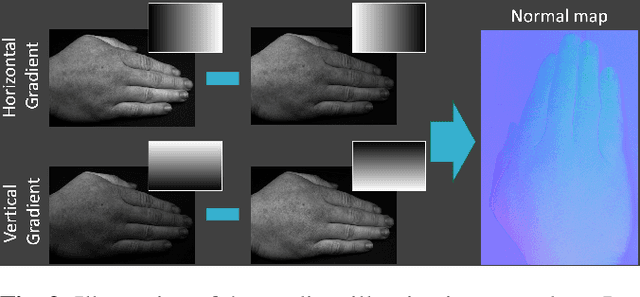
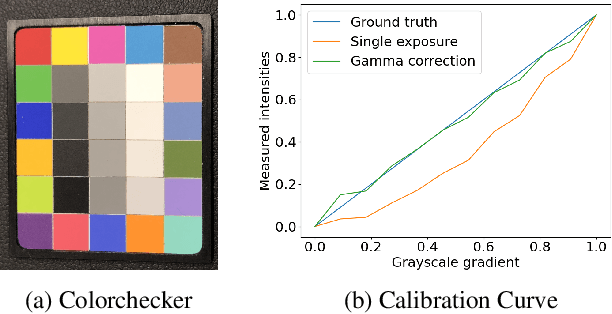
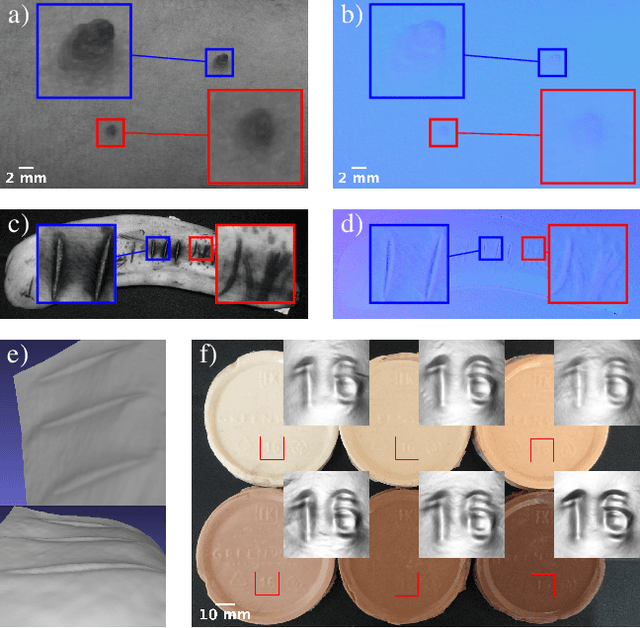
Abstract:The utilization of computational photography becomes increasingly essential in the medical field. Today, imaging techniques for dermatology range from two-dimensional (2D) color imagery with a mobile device to professional clinical imaging systems measuring additional detailed three-dimensional (3D) data. The latter are commonly expensive and not accessible to a broad audience. In this work, we propose a novel system and software framework that relies only on low-cost (and even mobile) commodity devices present in every household to measure detailed 3D information of the human skin with a 3D-gradient-illumination-based method. We believe that our system has great potential for early-stage diagnosis and monitoring of skin diseases, especially in vastly populated or underdeveloped areas.
Uncalibrated Deflectometry with a Mobile Device on Extended Specular Surfaces
Jul 24, 2019



Abstract:We introduce a system and methods for the three-dimensional measurement of extended specular surfaces with high surface normal variations. Our system consists only of a mobile hand held device and exploits screen and front camera for Deflectometry-based surface measurements. We demonstrate high quality measurements without the need for an offline calibration procedure. In addition, we develop a multi-view technique to compensate for the small screen of a mobile device so that large surfaces can be densely reconstructed in their entirety. This work is a first step towards developing a self-calibrating Deflectometry procedure capable of taking 3D surface measurements of specular objects in the wild and accessible to users with little to no technical imaging experience.
 Add to Chrome
Add to Chrome Add to Firefox
Add to Firefox Add to Edge
Add to Edge